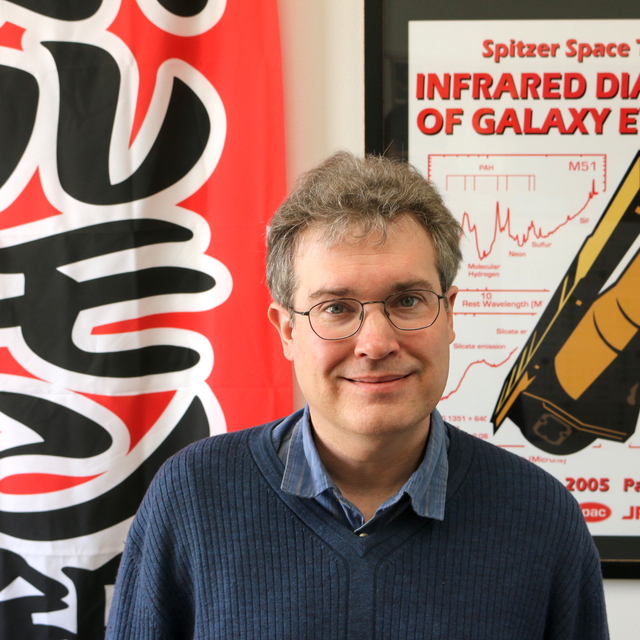August
2018
•
2018MNRAS.478.4238D
Authors
•
Dai, Y. Sophia
•
Wilkes, Belinda J.
•
Bergeron, Jacqueline
•
Kuraszkiewicz, Joanna
•
Omont, Alain
•
Atanas, Adam
•
Teplitz, Harry I.
Abstract
•
We report the relationship between the luminosities of active galactic nuclei (AGNs) and the rates of star formation (SF) for a sample of 323 far-infrared (FIR)-detected AGNs. This sample has a redshift range of 0.2 < z < 2.5, and spans three orders of magnitude in luminosity, {L_X ∼ 10^{42-45}}erg s-1. We find that in AGN hosts, the total infrared (IR) luminosity (8-1000 µm) has a significant AGN contribution (average ∼ 20 per cent), and we suggest using the FIR luminosity (30-1000 µm) as a more reliable star formation rate (SFR) estimator. We conclude that monochromatic luminosities at 60 and 100 µm are also good SFR indicators with negligible AGN contributions, being less sensitive than integrated IR luminosities to the shape of the AGN spectral energy distribution (SED), which is uncertain at λ > 100µm. Significant bivariate LX-LIR correlations are found, which remain significant in the combined sample when using residual partial correlation analysis to account for the inherent redshift dependence. No redshift or mass dependence is found for the ratio between SFR and black hole accretion rate (BHAR), which has a mean and scatter of log (SFR/BHAR) =3.1 ± 0.5, agreeing with the local mass ratio between supermassive black hole and host galaxies. The large scatter in this ratio and the strong AGN-SF correlation found in these IR-bright AGNs are consistent with the scenario of an AGN-SF dependence on a common gas supply, regardless of the evolutionary model.
Links




